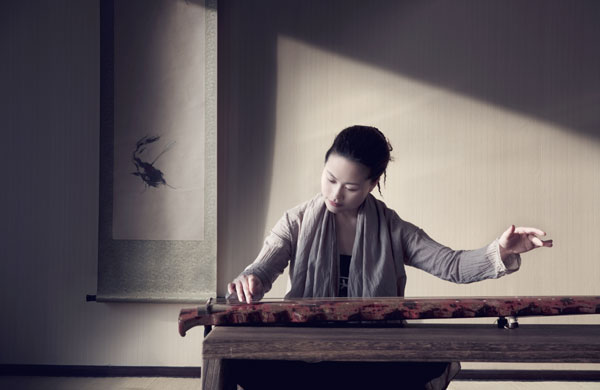 |
|
Wu Na started learning guqin at age 9, and now plays contemporary music with the ancient instrument. Photos provided to China Daily
|
Wu Na has been playing the guqin for 23 years, and is passionate about modernizing the traditional instrument. Chen Nan chats to the musician about her plans to bring the seven-stringed zither to a wider audience.
In 1992, when 13-year-old Wu Na was studying guqin (seven-stringed zither) at the Affiliated High School of Central Conservatory of Music, she was given a cassette from her roommate called China Dream. It was a recording featuring Dutch jazz flutist-composer Chris Hinze, veteran Chinese guqin player Cheng Gongliang, American coloratura soprano Claron McFadden and Indian percussionist Ramesh Shotham. Wu, who started learning guqin at 9, was captured by the sounds created by the four artists. She played the cassette day and night.
"All I learned about guqin was its history and tradition. But I had never heard this kind of interpretation of the instrument," recalls Wu, 34. "There was a voice telling me that this is the kind of music I should make."
Since then, the musician, who has been playing the guqin for 23 years and is the first musician in China to receive a Master's degree in guqin performance, started combining guqin with other musical instruments and various music genres, such as jazz, electronica and rock.
At the Beijing One International Arts of Performance Festival concluded on Aug 18, Wu cooperated with French poet Philippe Tancelin and Chinese modern dancer-choreographer Hou Ying, performing a work that blurred the boundaries of poetry, dance and music.
Such a combination is definitely not new to the musician. In March 2010, she created the Guqin Stage at a theater in Fangjia Hutong, an art zone in Beijing. She teamed up with a variety of artists from around the world and brought a series of collaborative performances to the space, which incorporated tea ceremony arts, Kunqu Opera, painting, and calligraphy.
We recommend:
